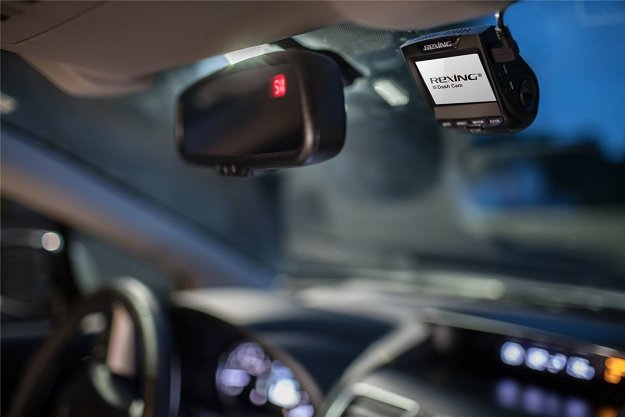Trucks are more expensive than they’ve ever been, but that hasn’t done a thing to slow Americans’ growing demand for more and better pickups. Trucks are also more advanced, safer, and more comfortable than they’ve ever been, thanks in large part to widespread use of new technologies and better construction materials.
After spending a week with two greats from Ford, the Ranger and the Raptor, as well as significant time with several others, I’m convinced of the upside. New trucks are every bit as accommodating as passenger cars, and in many cases they match top luxury brands in delivering a tech-forward, comfortable experience. Other than the challenges of navigating a large vehicle around places that aren’t really designed for them (cough, cough, New England), there is very little daylight between a pickup truck driving experience and that of the cushiest cars.

Build quality and construction materials have changed dramatically over the years, with lightweight metals like aluminum taking over for steel, but the advancements in safety and other tech are the driving force behind the pickup truck’s ability to be an everyday vehicle for many people. Quite a few new pickups come standard with the latest infotainment and safety tech, but even the cheapest trucks are miles ahead of their predecessors from just a few years ago.
Here’s a look at some of the ways technology is making trucks into better everyday vehicles:
Safety

Pickup trucks have historically lagged behind passenger cars in safety testing scores, and while that trend has continued on with the 2019 model year, the number of standard and available advanced driver assistance systems has grown considerably across the board. Automakers have begun offering their own safety equipment packages as standard equipment on several new trucks. Toyota includes its Safety Sense tech on every new Tacoma and Tundra, Ford’s Co-Pilot 360 package is standard on many F-Series and Ranger trims and optional on others, and Honda Sensing is available for most Ridgeline trims. Others like Nissan, Chevrolet, and GMC offer the same types of safety tech as standalone options or in packages.
All of that is great, but it’s just the basic stuff. Most brands also offer some level of assistance technology that helps take the guesswork out of the most common types of “truck stuff”. GMC’s new Sierra trucks are available with a ProGrade Trailering system that uses cameras and the in-dash screen to make the towing experience vastly less complicated than it was before. Others like Ford offer trailer backup assist, which can help keep drivers from experiencing the “Austin Powers” 99-point turnaround embarrassment.
Entertainment
There aren’t any new trucks offered with factory tape decks and CB radios these days, and while those were both super exciting features for 9-year-old me, there’s no debating the fact that the latest pickups offer an impressive number of audio and infotainment technologies.

Thanks to the NHTSA requirement that all new vehicles come with backup cameras, we have dash-mounted screens in most trucks. That opened the door for even entry level pickups to support Apple CarPlay and Android Auto, navigation, and other apps that provide weather and traffic information. Trucks like the Ram 1500 take infotainment to the next level with larger screens (12 inches across the diagonal) and the ability to run two apps at the same time. This means that the truck can display map information while also running a near-full-size music app on the same screen. Rear seat passengers don’t miss out on the action, either. Power outlets and USB ports have become common options, and the upgraded sound systems available in most trucks easily fill the whole cabin with sound.
Ride and Handling
All pickup trucks ride like a covered wagon hauling a dysentery-stricken family down the Oregon Trail, right? Some still do, but most have moved on from the old-school leaf springs of their predecessors to suspension configurations that look an awful lot like the ones we see in expensive luxury SUVs from brands like Range Rover.
A great example of this is the Ram 1500’s auto-leveling air suspension. It’s a class-exclusive feature that lowers the truck at highway speeds to reduce drag and bump up fuel efficiency. On the other end, the system works to level the truck when it’s towing a heavy trailer. It’s also great for a laugh, as the Ram can be raised and lowered with a switch inside the cab.
All of that sounds great for the truck’s capability, but what it means in every day driving is a smooth, controlled ride that’s nothing like the pickups most of us grew up with. Even trucks without the benefit of air suspension like the F-150 maintain a comfortable ride over all but the bumpiest surfaces. More impressive than that, hardcore pickups like the Raptor are able to stay composed when cruising down the highway, even with off-road shocks and a lift kit.
Comfort
Retirees with pension checks to burn have been buying Super Cab Ford F-150s with cushy leather seats to show off at the country club for decades now, but a wider audience is now also getting in on the luxury truck market. Inside, the latest pickups from Ram, Ford, and even relative outsiders like Nissan have been available with many of the same creature comforts and forward-thinking technologies that luxury cars have touted for years.
Ford, for example, offers their fantastic multi-contour seats in top trims of the F-150. They’re far from a cheap option, but bring heating, cooling, and massaging functions. Getting a back rub while towing 10,000 pounds doesn’t sound all that bad, now does it? Ram has the same idea with its latest 1500 pickup, offering heated and cooled front seats and heated rear seats in the top trim levels.

People have been living with pickup trucks as their only vehicle for almost as long as the automobile has existed, but they’ve never been as comfortable or as usable as they are now. Those extra features come at a price, but for many people the extra cost will be worth the fact that they can take the truck to the work site and then out on date night without jostling their partner too badly on the way. You can still buy an old vinyl-seated, steel-wheeled pickup with roll-up windows, but the market has never been better for people that want to be pampered while getting things done.
Editors' Recommendations
- This $3 USB adapter fixed all of my Apple CarPlay connection problems
- BMW shipping cars without advertised Apple and Google features
- Study: Motorists using Apple CarPlay are more distracted than drunk drivers
- 2020 Ram 1500 EcoDiesel proves big trucks don’t have to be gas guzzlers
- These age brackets admit to the most distracted driving





